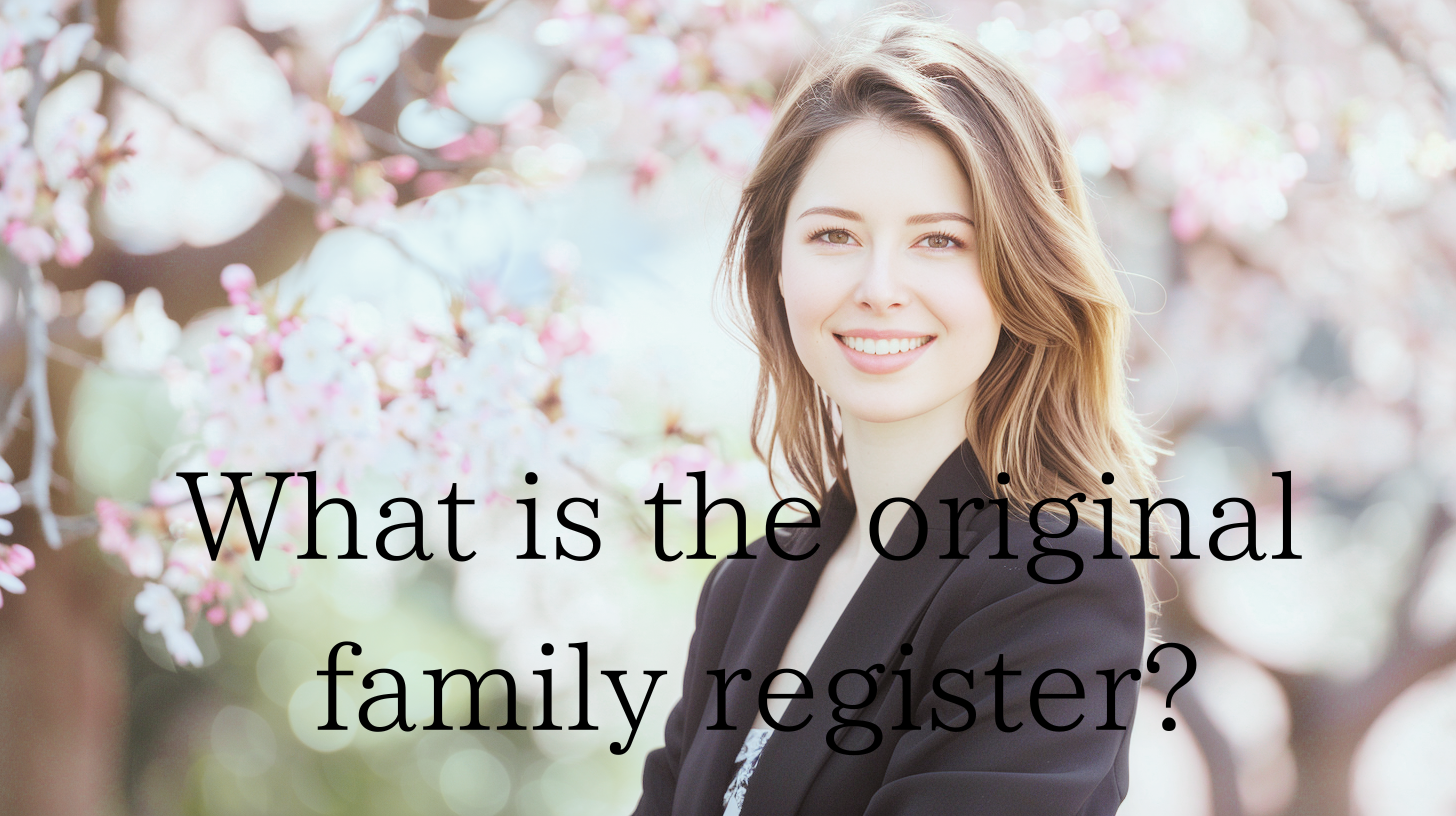What is the original family register?No.2
What is the original family register?No.2 (改製原戸籍とは?)
Family registers are necessary to apply for inheritance registration. In the previous issue, I introduced the family registers of original source of registration, especially the Heisei Reformed Family Register. In this issue, we will look at other family registers of original source of registration.
(相続登記の申請に必要な戸籍ですが、前回は、改製原戸籍、特に平成改製原戸籍について紹介しました。今回は、その他の改製原戸籍について見ていきましょう。)
The original family register prior to the Heisei Reformed Family Register is the Showa Reformed Family Register. This is a result of a legal amendment in 1957, which changed the family register from a family register centered on the head of the family to a family register consisting of a married couple and their unmarried children. The previous family register is called the Showa Reformed Family Register. Until then, the family register consisted of the family as a unit. The family register consisted mainly of the head of the family, the head of the household, and the relatives and their spouses. Unlike today’s family registers, the head of the family, his/her spouse, children, the head’s father and mother, siblings, and their spouses and children formed a single family unit.
(平成改製原戸籍の前の改製原戸籍が、昭和改製原戸籍になります。昭和32年(1957年)の法改正によるもので、戸主を中心とした戸籍から、夫婦とその未婚の子供を単位とする戸籍になりました。従前の戸籍を昭和改製原戸籍と言います。それまでの戸籍は家を一つの単位として構成されていました。家の長である戸主を中心に、戸主の親族や配偶者で構成されていたのです。現在の戸籍と違って、戸主の夫婦、子供、戸主の父や母、兄弟姉妹、その配偶者や子供などが一つの家として一つの戸籍を編成していました。)
The change to a family register with the married couple and their unmarried children as the unit of registration signified a major change in the social structure and family system in Japan after World War II. The traditional family system and social order were greatly shaken in postwar Japan. Amidst this turmoil, democratic values that emphasized individual rights and freedoms emerged, which in turn called for reform of the family registration system. The Showa Reform was an important milestone in Japan’s family registration system, contributing greatly to the spread of democratic values and the protection of individual rights.
(夫婦とその未婚の子供を単位とする戸籍に変わったことは、第二次世界大戦後、日本の社会構造や家族制度に大きな変化があったことを意味します。戦後の日本では従来の家族制度や社会秩序が大きく揺らぎました。このような混乱の中で、個人の権利や自由を重視する民主主義的な価値観が台頭し、それに伴い戸籍制度の改革が求められました。この昭和改製は、日本の戸籍制度における重要な節目であり、民主主義的な価値観の浸透や個人の権利保護の向上に大きく貢献しました。)








